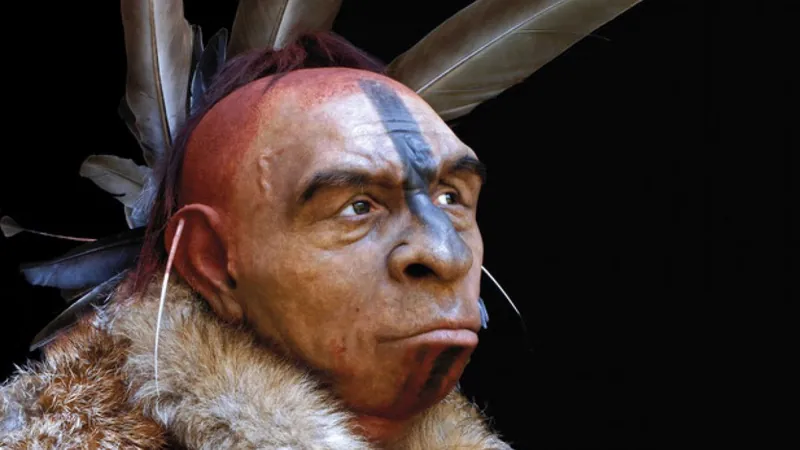
Did We Annihilate the Neanderthals? Groundbreaking Research Offers Insights into Their Mysterious Extinction!
2024-10-04
Neanderthal Existence and Decline
Around 37,000 years ago, Neanderthals thrived in small groups in what is now southern Spain, unaware that they were inching toward extinction. Their existence may have taken a dramatic turn due to the eruption of the Phlegraean Fields in Italy, which occurred a few thousand years prior and disturbed food supply chains across the Mediterranean. Despite their apparent resourcefulness—including the crafting of tools, foraging for edible plants, and even producing art and jewelry—the Neanderthals faced an impending doom they could not foresee.
Their extinction narrative doesn't begin with a bang; rather, it stretches back tens of thousands of years to a time when they became isolated and fragmented, leading to the slow decline of a species that had managed to survive for nearly half a million years in some of Earth's harshest environments.
Factors Contributing to Extinction
By approximately 34,000 years ago, the Neanderthal population had dwindled, raising tantalizing questions among archaeologists: Did our ancestors, Homo sapiens, play a direct role in their disappearance? Theories have ranged from direct confrontations and violence to competition for resources and the inadvertent spread of diseases.
Recent research reveals a complicated blend of factors that contributed to the extinction of Neanderthals—a veritable perfect storm of environmental changes, cultural differences, and competition, both from each other and from the encroaching modern human populations.
Historical Context
The enigmatic history of the Neanderthals began in 1856 with the discovery of a skeletal fragment in Germany's Neander Valley. Over the years, misconceptions about their brutishness have been shattered by accumulating archaeological and genetic evidence, painting them as much more sophisticated than previous narratives suggested. They showed signs of creating tools, engaging in artistic expression, burying their dead with ritual, and communicating in ways that, while primitive compared to modern humans, were notably advanced for their time.
For a notable period, spanning roughly 2,600 to 7,000 years, Neanderthals coexisted with early modern humans in Europe. However, this overlap occurred during a time of great strife for the Neanderthals, leading researchers to speculate on the exact dynamics of their demise. Some areas show evidence of empty landscapes just before human arrival, while others indicate interactions between the two species.
Genetic Insights
The complexities of Neanderthal genetics play a crucial role in this narrative. Notably, a groundbreaking study in 2010 sequenced a Neanderthal genome, revealing that interbreeding between the two species occurred. This genetic mixing means that many people today carry traces of Neanderthal DNA, contributing to our understanding of human ancestry. However, while modern humans possessed greater genetic diversity and social organization, Neanderthals struggled with a more limited gene pool. Reduced genetic variation and small population sizes led to increased inbreeding and a "mutational burden," which likely hampered their survival.
Social Structures and Competition
Infant mortality rates among Neanderthals were another significant factor influencing their decline. Researchers estimate that even a minor decrease in the survival of Neanderthal infants could lead to extinction in just 2,000 years. As their numbers dwindled, Neanderthal social structures fragmented, undermining their ability to nurture future generations. In stark contrast, modern human populations were flourishing, rapidly expanding across Europe.
While some archaeological evidence suggests violent encounters between Neanderthals and modern humans, there remains little to definitively connect the dots to an active extermination. Instances of skeletal injuries do indicate violence—but whether inflicted by fellow Neanderthals or modern humans remains speculative. Additionally, despite shared immune system genes, current genetic research has yet to prove that diseases introduced by modern humans were responsible for Neanderthal extinction.
Competition posed another threat. Increased resource competition between Neanderthals and modern humans, whose advanced cognition and tool-making gave them a survival edge, likely exacerbated the challenges faced by Neanderthals. Furthermore, research indicates that while Neanderthals were capable of innovation, population isolation hindered their cultural evolution compared to modern human groups, which benefited from sharing ideas across larger social networks.
Assimilation vs. Extermination
Interestingly, the narrative of Neanderthal extinction may not be as simple as eradication; theory proposes a gradual assimilation of Neanderthals into modern human populations. Some researchers speculate that interbreeding fostered a slow absorption rather than an outright extinction, leading to a blending of the two groups' lineages.
Conclusion
Despite ongoing studies, key pieces of evidence, such as fossilized remains of humans and Neanderthals found together, remain elusive. If such evidence were discovered, it could change our understanding of how closely those two species lived and interacted.
Ultimately, the tale of the Neanderthals is riddled with complexities and nuances, reflecting our continuously evolving understanding of these remarkable human relatives. As science progresses, we inch closer to solving the multifaceted puzzle of why Neanderthals vanished—forever leaving us to consider the profound interplay of nature, culture, and evolution in shaping the destiny of humanity.





 Brasil (PT)
Brasil (PT)
 Canada (EN)
Canada (EN)
 Chile (ES)
Chile (ES)
 España (ES)
España (ES)
 France (FR)
France (FR)
 Hong Kong (EN)
Hong Kong (EN)
 Italia (IT)
Italia (IT)
 日本 (JA)
日本 (JA)
 Magyarország (HU)
Magyarország (HU)
 Norge (NO)
Norge (NO)
 Polska (PL)
Polska (PL)
 Schweiz (DE)
Schweiz (DE)
 Singapore (EN)
Singapore (EN)
 Sverige (SV)
Sverige (SV)
 Suomi (FI)
Suomi (FI)
 Türkiye (TR)
Türkiye (TR)